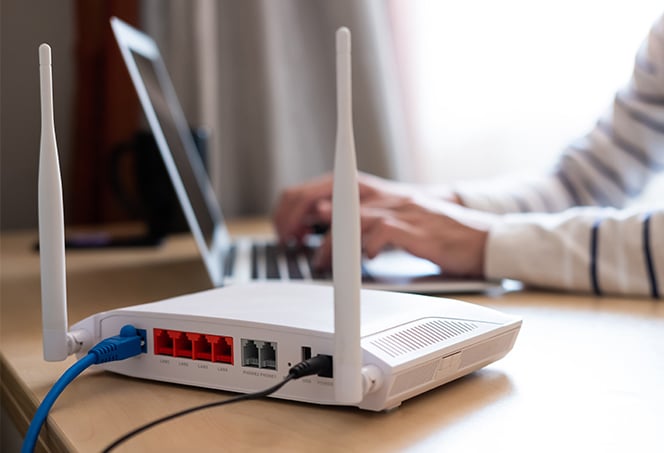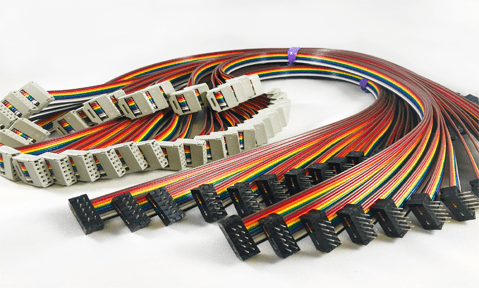In the contemporary digital landscape, seamless internet connectivity is of paramount importance. Whether for professional, educational, or recreational purposes, dependable internet access has evolved into an essential requirement. Central to this connectivity is the router, a device responsible for managing data traffic both within a network and across different networks. This article seeks to examine the diverse facets of routers, encompassing their various types, functionalities, essential features, and their significance in our everyday lives. Additionally, we will investigate the technological advancements in routers and their impact on the future of networking.
1. Understanding Routers

1. What Is a Router?
A router is a device utilized in networking that facilitates the forwarding of data packets between different computer networks. It functions as a traffic manager, identifying the most efficient route for data to travel from its origin to its endpoint. Routers enable the connection of multiple devices to the internet and oversee the flow of information, ensuring that data packets arrive at their designated locations effectively.
Routers function at the network layer of the OSI (Open Systems Interconnection) model and utilize IP (Internet Protocol) addresses to identify and direct packets. They are vital components for both residential and business networks, acting as the interface between local networks and the internet.
2. How Routers Work
Routers operate by analyzing the destination IP address of incoming data packets. Upon receiving a packet, the router references its routing table, which contains data regarding the optimal paths to various networks. Utilizing this information, the router forwards the packet to the next point on its route to the final destination.
In addition to packet forwarding, routers carry out several essential functions:
Network Address Translation (NAT): This feature enables multiple devices within a local network to utilize a single public IP address, effectively concealing the internal IP addresses from external visibility.
Dynamic Host Configuration Protocol (DHCP): Routers can automatically assign IP addresses to devices on the network, thereby streamlining the configuration process.
Firewall: Numerous routers come equipped with integrated firewall functionalities to safeguard the network against unauthorized access and cyber threats.
2. Types of Routers

Routers are available in a variety of types, each tailored for distinct applications and environments. Familiarity with these types can assist users in choosing the most suitable router for their requirements.
a. Wired Routers
Wired routers facilitate internet connectivity for devices through Ethernet cables. They offer stable and dependable connections, making them particularly suitable for settings where consistent internet access is essential, such as in corporate offices or gaming environments.
Advantages:
– Superior speeds and reduced latency compared to wireless alternatives.
– Enhanced security, as they are less vulnerable to unauthorized access.
Disadvantages:
– Limited mobility; devices must be directly connected to the router.
– Requires additional cabling and setup time.
b. Wireless Routers
Wireless routers allow devices to access the internet without the need for physical cables. They emit Wi-Fi signals, enabling devices like smartphones, laptops, and tablets to connect wirelessly. These routers are the most prevalent type found in residential and small office settings.
Advantages:
– Increased mobility; devices can connect from any location within the Wi-Fi coverage area.
– Simpler to set up and configure compared to wired routers.
Disadvantages:
– Possibility of interference and signal degradation due to physical barriers or electronic devices.
– Security vulnerabilities, as unauthorized users may attempt to access the network if it is not adequately secured.
c. Dual-Band and Tri-Band Routers
Dual-band routers function on two frequency bands: 2.4 GHz and 5 GHz. This feature allows users to connect devices to the most suitable band according to their requirements. The 2.4 GHz band offers a broader range but slower speeds, while the 5 GHz band provides faster speeds but has a shorter range.
Tri-band routers introduce an additional 5 GHz band, enhancing performance by more effectively distributing network traffic. These routers are particularly advantageous for households with numerous devices that demand high-speed internet for activities such as streaming and gaming.
Advantages:
– Enhanced performance and decreased network congestion.
– Flexibility in connecting devices based on specific needs.
3. Key Features of Routers

When selecting a router, various features can significantly influence performance, security, and the overall user experience. Below are some essential features to take into account:
a. Speed and Performance
The speed of a router is typically quantified in Mbps (megabits per second), which indicates the rate at which data can be transmitted across the network. The speed rating generally reflects the maximum theoretical speed, which may fluctuate due to factors such as network congestion, distance from the router, and the specifications of connected devices.
b. Security Features
Security is a vital aspect to consider when choosing a router. Contemporary routers are equipped with a range of security features designed to safeguard against unauthorized access and cyber threats, including:
– WPA3 (Wi-Fi Protected Access 3): The most recent security protocol that offers enhanced encryption and protection against password attacks.
– Guest Network: A distinct network for visitors, ensuring the main network remains secure.
– Firewall: Integrated firewalls that oversee incoming and outgoing traffic, blocking potential threats.
c. Quality of Service (QoS)
Quality of Service (QoS) settings enable users to prioritize specific types of traffic over others. For instance, users can give precedence to video streaming or online gaming traffic to minimize latency and buffering. This feature is particularly beneficial in households with multiple users and devices.
d. Ports and Connectivity Options
The variety and number of ports on a router can affect its functionality and connectivity options. Common ports include:
– Ethernet Ports: For wired connections to devices such as computers, gaming consoles, and smart TVs.
– USB Ports: For connecting external storage devices or printers for network sharing.
– WAN Port: The port that links the router to the modem for internet connectivity.
e. Firmware and Software Features
Numerous modern routers are equipped with customizable firmware that allows users to adjust settings, manage devices, and monitor network traffic. Additionally, some routers provide smartphone applications for more convenient management and oversight.
4. Setting Up a Router
Establishing a router may appear challenging; however, by following the appropriate steps, the procedure can be quite simple. Below is a general guide for configuring a home router:
a. Assemble Required Equipment
Prior to setting up your router, confirm that you possess the following items:
– The router
– A modem (if it is not integrated with the router)
– Ethernet cables
– Power adapter for the router
b. Connect the Hardware
Link the modem to the router’s WAN port using an Ethernet cable.
Connect the router to a power source and turn it on.
For wired connections, attach devices (such as computers or gaming consoles) to the router’s LAN ports with Ethernet cables.
c. Access the Router’s Configuration Interface
Connect to the router using a device (computer or smartphone) that is linked via Ethernet or Wi-Fi.
Launch a web browser and input the router’s IP address (usually located on the router or in the user manual) to reach the configuration interface.
Log in with the default username and password (generally found on the router).
d. Adjust Settings
Modify the default login credentials to improve security.
Establish the Wi-Fi network by selecting a network name (SSID) and password.
Fine-tune security settings, such as enabling WPA3 and creating a guest network if desired.
Adjust Quality of Service (QoS) settings if needed to prioritize certain types of traffic.
e. Update Firmware
Verify if there are any firmware updates available from the manufacturer and install them to ensure your router is equipped with the latest features and security enhancements.
f. Verify Connectivity
Once configuration is complete, test the network by connecting devices to the Wi-Fi and confirming their internet access. Make any necessary adjustments to the settings as required.
5. Troubleshooting Common Router Issues
Routers may experience a range of issues that can impact both performance and connectivity. Below are some prevalent problems along with suggested troubleshooting measures:
a. Absence of Internet Connection
In cases where devices cannot access the internet:
Verify connections: Confirm that all cables are firmly connected.
Restart the modem and router: Power cycle both devices to refresh the connections.
Check ISP status: Investigate whether there are any service outages or maintenance activities in your vicinity.
b. Weak Wi-Fi Signal
If the Wi-Fi signal is weak or fluctuating:
Reposition the router: Place it in a more central location, ensuring it is free from walls or other obstructions.
Minimize interference: Keep the router away from electronic devices that could disrupt the signal, such as microwaves or cordless phones.
Consider a Wi-Fi extender or mesh system: If coverage remains inadequate, it may be beneficial to invest in a Wi-Fi extender or a mesh network system to enhance connectivity.






